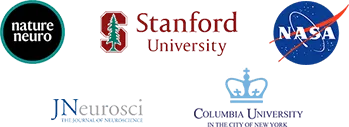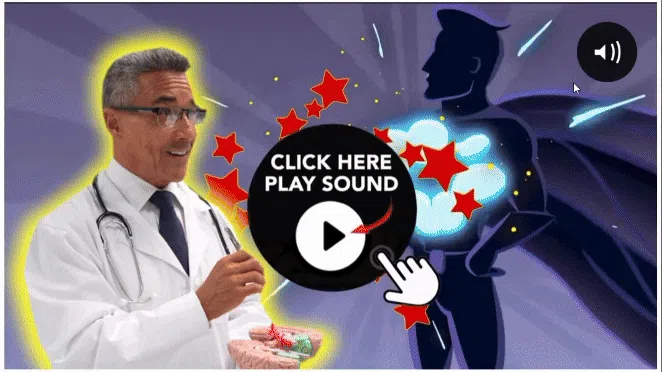Do This "Bedtime Ritual" and Wake Up to Spiritual and Financial Blessings...
Do This "Bedtime Ritual" and Wake Up to Spiritual and Financial Blessings...
Breakthrough NASA Study Reveals a Brain Wave Revs Up Your Brain Power...
A 7-Second At-Home Ritual..
Scientifically Verified By
Four Neuroscience Studies..
That Revs Up Your Brain Power..
Here Are The 4 Things You'll Learn In This Video:
1. The Secret to Effortless Achievement:
Unveiling a tiny Brain Wave linked to our best and worst days shows how syncing with it can turn life's struggles into successes
2. Leaked NASA Research Reveals:
Once dismissed as impossible, the 7-Second Brain Trick has now caught NASA's attention for its ability to enhance memory, creativity, and focus.
This groundbreaking method was kept quiet due to its life-changing potential—until now.
3. The "Source Code" to Life:
Brain Wave, rooted in science, directly influences human aspects, offering a life 'source code' for effortless decision-making
4. NYC Neuroscientist Breaks Vow of Silence:
"Their attorneys are trying to shut this site down."
The results from NASA's biggest psychology study ever have left them amazed.
Scientific References and
Spiritual Studies:


Scientific References:
Venkatraman, R.. You're 96 Percent Less Creative Than You Were as a Child. Here's How to Reverse That.
https://www.inc.com/rohini-venkatraman/4-ways-to-get-back-creativity-you-had-as-a-kid.html
Kerley, J. Creative Inventive Design and Research.
https://ntrs.nasa.gov/api/citations/19940029213/downloads/19940029213.pdf
Robinson, K. “Do Schools Kill Creativity?”.
Uable, 28 August 2023. “The end of education.”https://medium.com/@connect_75384/the-end-of-education-94f3a39fe97c
Church, D., Yang, A., Fannin, J., & Blickheuser, K. (2022). The biological dimensions of transcendent states: A randomized controlled trial. Frontiers in Psychology, 13, 928123.
Herrmann, C. S., Strüber, D., Helfrich, R. F., & Engel, A. K. (2016). EEG oscillations: From correlation to causality. International Journal of Psychophysiology, 103, 12-21.https://doi.org/10.1016/j.ijpsycho.2015.02.003
Poe, G. R. (2017). Sleep Is for Forgetting. Journal of Neuroscience, 37(3), 464-473.https://doi.org/10.1523/JNEUROSCI.0820-16.2017
Crivelli-Decker, J., Hsieh, L.-T., Clarke, A., & Ranganath, C. (Year). Theta oscillations promote temporal sequence learning.Neurobiology of Learning and Memory, Volume Number(Page Numbers).https://doi.org/10.1016/j.nlm.2018.05.001
Zielinski, M. C., Tang, W., & Jadhav, S. P. (2020). The role of replay and theta sequences in mediating hippocampal-prefrontal interactions for memory and cognition. Hippocampus, 30(1), 60-72.https://doi.org/10.1002/hipo.22821
Henao, D., Navarrete, M., Valderrama, M., & Le Van Quyen, M. (2020). Entrainment and synchronization of brain oscillations to auditory stimulations.Neuroscience Research, 156, 271-278.https://doi.org/10.1016/j.neures.2020.03.004
Hanslmayr, S., Axmacher, N., & Inman, C. S. (2019). Modulating human memory via entrainment of brain oscillations. Trends in Neurosciences, 42(7), 485-499.
Michael, E., Santamaria Covarrubias, L., Leong, V., & Kourtzi, Z. (2023). Learning at your brain's rhythm: individualized entrainment boosts learning for perceptual decisions. Cerebral Cortex, 33(9), 5382-5394.https://doi.org/10.1093/cercor/bhac426
Trost, W., Frühholz, S., Schön, D., Labbé, C., Pichon, S., Grandjean, D., & Vuilleumier, P. (2014). Getting the beat: entrainment of brain activity by musical rhythm and pleasantness. NeuroImage, 103, 55-64.https://doi.org/10.1016/j.neuroimage.2014.09.009
Trost, W. J., Labbé, C., & Grandjean, D. (2017). Rhythmic entrainment as a musical affect induction mechanism. Neuropsychologia, 96, 96-110.https://doi.org/10.1016/j.neuropsychologia.2017.01.004
Crivelli-Decker, J., Hsieh, L.-T., Clarke, A., & Ranganath, C. (Year). Theta oscillations promote temporal sequence learning.Neurobiology of Learning and Memory, Volume Number(Page Numbers).https://doi.org/10.1016/j.nlm.2018.05.001
Zielinski, M. C., Tang, W., & Jadhav, S. P. (2020). The role of replay and theta sequences in mediating hippocampal-prefrontal interactions for memory and cognition. Hippocampus, 30(1), 60-72.https://doi.org/10.1002/hipo.22821
Henao, D., Navarrete, M., Valderrama, M., & Le Van Quyen, M. (2020). Entrainment and synchronization of brain oscillations to auditory stimulations.Neuroscience Research, 156, 271-278.https://doi.org/10.1016/j.neures.2020.03.004
Hanslmayr, S., Axmacher, N., & Inman, C. S. (2019). Modulating human memory via entrainment of brain oscillations. Trends in Neurosciences, 42(7), 485-499.
Michael, E., Santamaria Covarrubias, L., Leong, V., & Kourtzi, Z. (2023). Learning at your brain's rhythm: individualized entrainment boosts learning for perceptual decisions. Cerebral Cortex, 33(9), 5382-5394.https://doi.org/10.1093/cercor/bhac426
Trost, W., Frühholz, S., Schön, D., Labbé, C., Pichon, S., Grandjean, D., & Vuilleumier, P. (2014). Getting the beat: entrainment of brain activity by musical rhythm and pleasantness. NeuroImage, 103, 55-64.https://doi.org/10.1016/j.neuroimage.2014.09.009
Trost, W. J., Labbé, C., & Grandjean, D. (2017). Rhythmic entrainment as a musical affect induction mechanism. Neuropsychologia, 96, 96-110.https://doi.org/10.1016/j.neuropsychologia.2017.01.004
Copyright © ALl Rights Reserved
Privacy Policy | DMCA | Terms of Service | Disclosure Agreement
Disclaimer: All information provided is for educational use only. Always consult with your doctor or primary care physician prior to starting any new health or fitness routine.
This site is not a part of the Facebook website or Facebook Inc. Additionally, This site is NOT endorsed by Facebook in any way.
FACEBOOK is a trademark of FACEBOOK, Inc.
